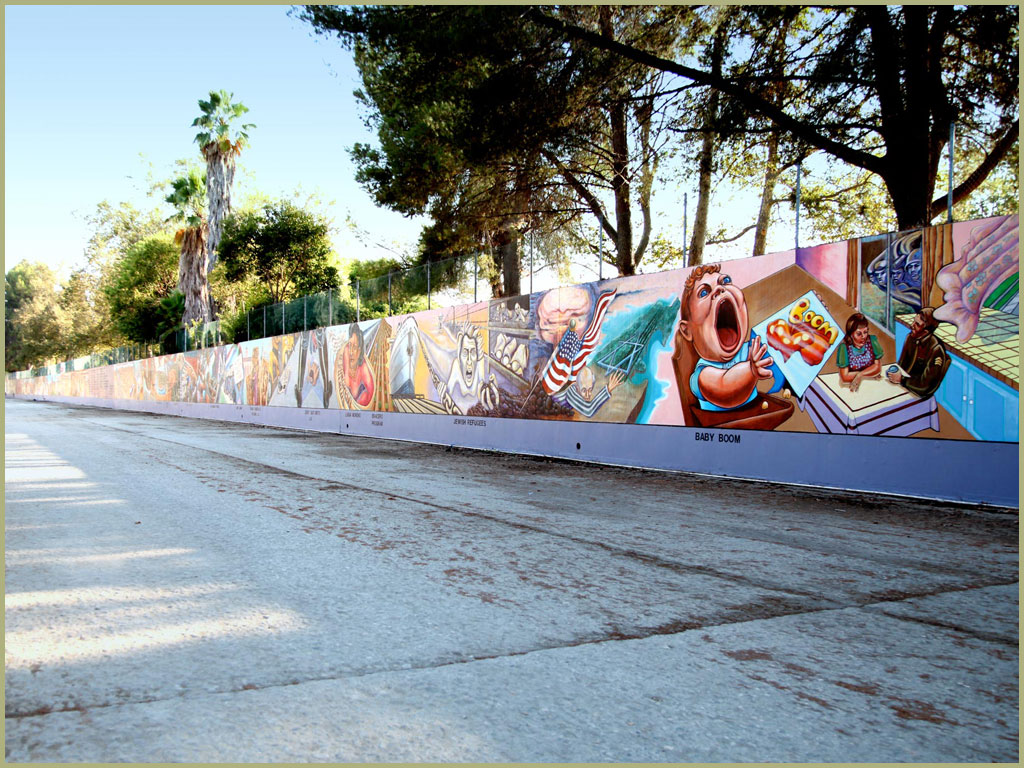
Considering the concept of monumentality in public art, I was led back to murals and their impact on spatial politics. The Great Wall in Los Angeles is a mural project begun by Judy Baca in 1974 that stretches over half a mile through the Tujunga Flood Control Channel. Over the course of four summers, the project employed 400 local youth and their families to work on the murals alongside artists, historians and scholars in what was truly a monumental social practice project. The project exemplifies social engagement not only in the mixing of a large and diverse group of community members, but in its engagement with history – each of the four summers focused on a different decade of California’s history from the 1920s through to the 1950s. Judy Baca explains some of the contextual considerations of the project by saying “I designed this project as an artist concerned not only with the physical aesthetic considerations of a space, but the social, environmental and cultural issues affecting the site as well.”
The official title of the work is The History of California, and the murals pay particular attention to the overlooked historical narratives of minority groups such as the Chicano population, Native Americans, and the LGBTQ community. The murals depict social practices that are both current as well as past, accepted as well as rejected. This devotion to creating a fuller and more multi-perspective history has led the style of the murals to be referred to as Social Realism.
To be able to walk half a mile through four decades shows public art’s ability to engage on a monumental scale spatially and socially.
For more info, check out:
http://sparcinla.org/programs/the-great-wall-mural-los-angeles/

